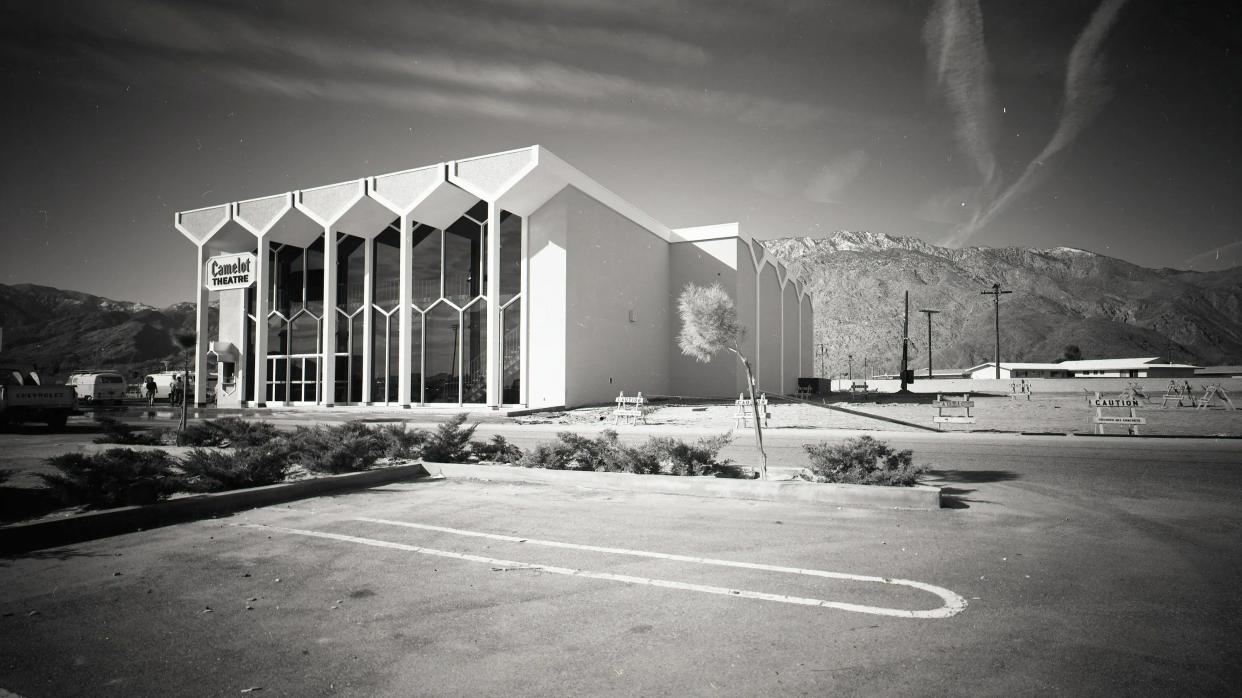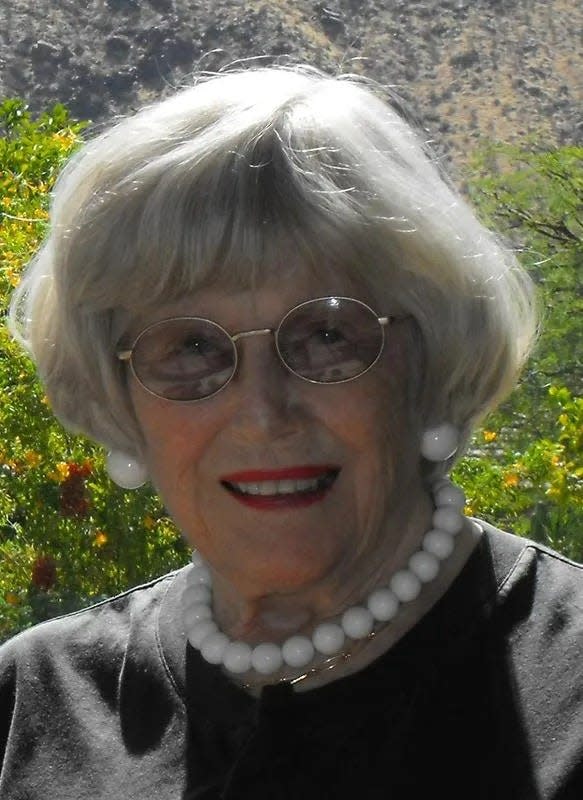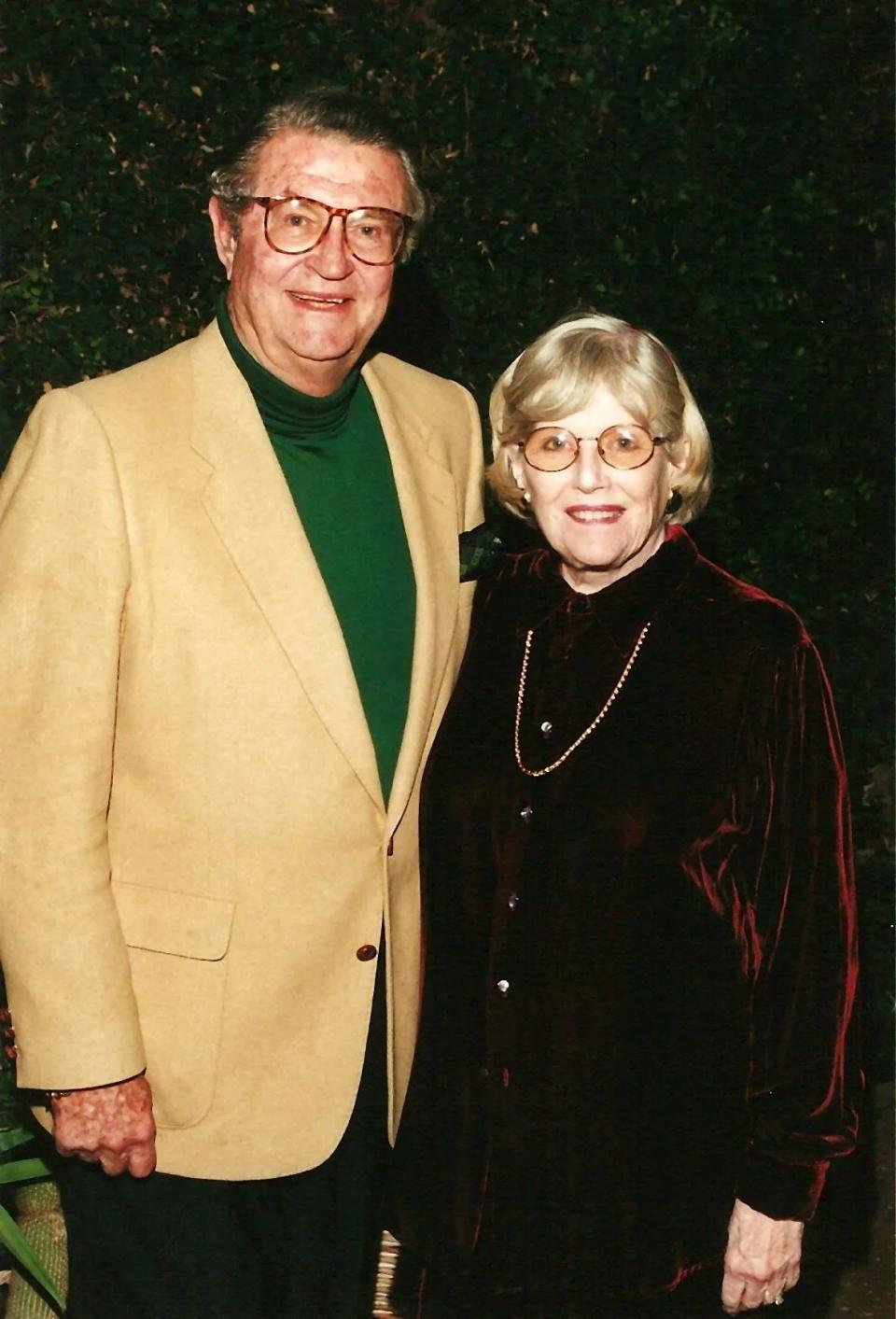History: Rozene Supple created cultural Camelot for desert community

Webster’s dictionary defines "Camelot" as King Arthur’s court, but also as a time, place or atmosphere of idyllic happiness. That the name was selected in the middle of the 1960s for a movie palace in Palm Springs makes some sense. Jackie Kennedy had used the word to define her husband’s legacy and era. Aspiring to bring art and entertainment to a literal desert and an area of cultural scarcity made the name appropriate.
In May 1966, The Desert Sun announced: “Swank Theater on Tap for Palm Springs.” Reputed to be one of the most sumptuous movie houses in America, the groundbreaking was scheduled for a few weeks hence by Metropolitan Theatres Corporation.
The theater would be ultra-modern in every respect. The intimate interiors would have the latest technical developments and design, with advanced projection systems and huge screens.
Designed by Mayer and Kanner, Architects, AIA, “the Camelot will have an exterior with solar glass and ceramic tile; an upper level with luxurious lounges and art gallery; and an auditorium with 650 seats — including rocking chair(s) ... Interior décor by Ben Mayer Associates, color consultants, is in rich greens and blues. Carpeting, especially designed, is being woven abroad.”
Unimaginable today that construction could be so quick; the theater was slated to open Thanksgiving week that same year. The Camelot boasted a first-run policy showing the best of Hollywood’s and the world’s film production. The Camelot became a treasured cultural hub for the desert.
Several decades later, economic downturn made business difficult. The Coachella Valley was in the doldrums. The Plaza and the Village Theaters were closed. Downtown Palm Springs was a wasteland of T-shirt shops and defunct storefronts. The disastrous Fashion Plaza mall destroyed The Desert Inn and subsequently went multiply bankrupt blighting the center of town.
At the end of the 1990s, despite the downturn and those declaring the desert was economically and otherwise dead, Ric and Rozene Supple bravely bought the Camelot Theatre with the aspiration of continuing to offer a fine movie theater for the best in film to the community.

Rozene first arrived on the desert in 1940 with her parents, George and Francis Richards, at age 16. Her father suffered from various health ailments, and the desert was therapeutic. They bought property in Smoke Tree Ranch and built a house. There, Rozene would make friends that would last a lifetime, including Bud Hoover, with whom she would ride her favorite horse, Diamond, across the wide-open desert. She attended Palm Springs High School that year and rode to school on occasion.
Her father had made a considerable fortune in radio broadcasting (and he owned Detroit’s first NFL team, the Detroit Lions). After graduation from Stanford, Rozene would learn about broadcasting through his numerous stations. Working at the lively KMPC, his station in Hollywood, she became acquainted with all the big bands and radio personalities of the day as they toured through Los Angeles, including Les Brown and his Band of Renown. She worked for Sonny Burke Music Inc. and Decca Records for a stint, remaining friends with Sonny and Les for the rest of their life.
Rozene married Sibley Moore, whom she met at Smoke Tree Ranch, but was widowed at a young age. At a Stanford reunion after Moore’s death, she became reacquainted with Ric Supple, with whom she had gone on a date while at college. He’d brought her home late, and she hadn’t gone out with him again. At the reunion they realized they were both bereft and all those decades later decided to try another date. Soon after, they were married and decided to make the desert their permanent home in 1974.
Rozene had learned a great deal from her father’s radio business and decided to buy her own station, KPAL AM in Palm Springs. She changed the name to KPSI which stood for “Keeping Palm Springs Informed.” At a time when women weren’t necessarily taken seriously, she became a force in business.

R & R Broadcasting, named for Ric and Rozene, would expand to two FM stations and three AM stations: KDES, Mix 100.5, KPSI, KPTR and KWXY. Their success in the radio business plunged them further into the community. She crossed paths with many actors and athletes, politicians and industrialists.
Her parents had cultivated an appreciation of the arts and music in Rozene. But in 1940s Los Angeles she fell in love with movies. Accordingly, Rozene and Ric purchased the Camelot Theatre to offer not just first-run movies, but art and foreign films. It didn’t matter if there weren’t enough people in Palm Springs to support a movie theater. Ideally, there still needed to be one according to Rozene, and she was willing to pay for it.
Ric and Rozene would often be seen at the Camelot sitting unassumingly in the very back row by the door, enabling a quick departure as the credits rolled. Watching a movie at the Camelot was special. The theater was expansive and could even be described as grand. The popcorn was topped with real butter. Upstairs, there was a bar, ubiquitous in Palm Springs during the preceding era. The experience harkened back to a more gracious, idyllic time.
Constantly concocting new endeavors, the Supples inaugurated the Palm Springs Cultural Center as a vehicle to perpetuate arts and culture in the desert. The Camelot Theatre was re-named but would remain true to its original name.
Multiple film festivals would find a home at the Cultural Center, like the American Documentary Film Festival and the Arthur Lyons Film Noir Festival. “Sordid Lives” would play there year after year, becoming a campy town favorite heralding the Cinema Diverse festival. The Cultural Center would also add live theater, musical events, art shows and lectures to its offerings. Rozene’s son, Rick Moore, would create and bring the Farmer’s Market to the Cultural Center, further expanding its offerings. The Cultural Center was the culmination of a lifetime of endeavor and philanthropy.
This week, a few months shy of her 98th birthday, Rozene died peacefully. She is deeply mourned and will be sorely missed. In the last weeks, she was still following the news, still talking about the future, still dreaming the next dream: always of some sort of Camelot. Never content with her accomplishments, Rozene’s legacy is one of immense service and contribution. Courtesy of her vision and generosity, the desert is a richer cultural place and even a more idyllic one.
Tracy Conrad is president of the Palm Springs Historical Society. The Thanks for the Memories column appears Sundays in The Desert Sun. Write to her at pshstracy@gmail.com.
This article originally appeared on Palm Springs Desert Sun: Palm Springs history: Rozene Supple created desert's cultural Camelot

